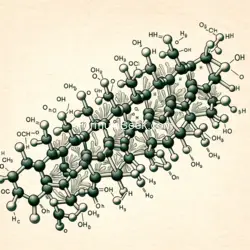
Understanding Monoglycerides in Infant Formula
When it comes to infant nutrition, every ingredient in baby formula is scrutinized for its benefits and potential effects. Among these ingredients, monoglycerides often raise questions for new parents. Let's dive into monoglycerides and why they're added to infant formula.
What are Monoglycerides?
Monoglycerides are a type of fat, specifically a glyceride. They are made by combining a glycerol molecule with one fatty acid chain. In simpler terms, they are structurally simpler fats than triglycerides, the most common form of fat in our diet.
These fats are not just found in baby formulas but are common in various food products. Their primary role is to act as emulsifiers. Emulsifiers help mix ingredients that typically don't blend well, such as oil and water.
Why are Monoglycerides Added to Infant Formula?
The addition of monoglycerides to infant formula serves several key purposes:
Enhancing Nutrient Absorption: Monoglycerides can help absorb fat-soluble vitamins and minerals. For infants, especially those with digestive challenges, this can be crucial in ensuring they get the necessary nutrients for healthy growth.
Improving Texture and Consistency: They help achieve the right consistency in the formula, making it more palatable and easier for infants to digest.
Mimicking Breast Milk: One of the primary goals of infant formula is to mimic human breast milk closely. Breast milk naturally contains monoglycerides, so their inclusion in the formula helps replicate the nutritional profile of breast milk.
Stabilizing the Formula: Monoglycerides help maintain the formula's stability, ensuring the fat content remains well-mixed and doesn't separate. This is important for the shelf life and quality of the product.
Safety and Regulations
The safety of monoglycerides in food, including infant formula, is thoroughly researched and regulated. Organizations like the U.S. Food and Drug Administration (FDA) and the European Food Safety Authority (EFSA) regulate the use of monoglycerides in food products. These bodies ensure that the levels used are safe and beneficial for consumption, including by infants.
Conclusion
In summary, monoglycerides are added to infant formula primarily as emulsifiers to enhance nutrient absorption, improve texture, and mimic breast milk's natural composition. They are regulated for safety and are a standard component in many formulas. As with any aspect of infant nutrition, if you have concerns or questions about ingredients in your baby's formula, it's always best to consult a pediatrician.



